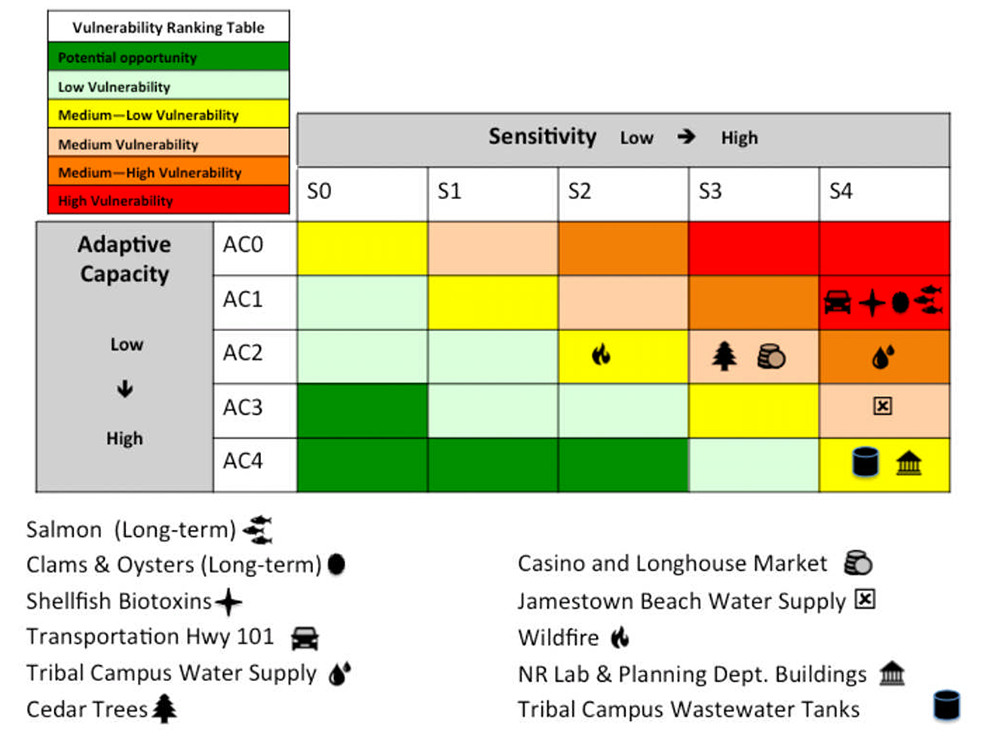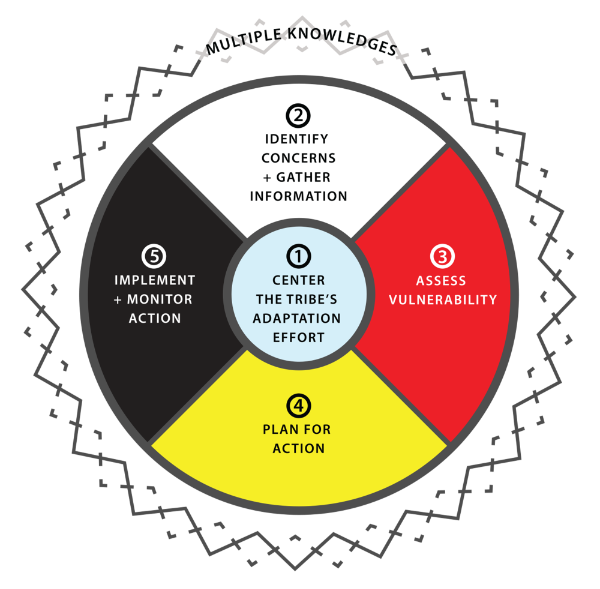Jamestown S’Klallam Tribe
“There is a lot of controversy around climate change, but the bottom line is that it’s a reality.”
—Ron Allen, Chairman Jamestown S’Klallam Tribe, Climate Vulnerability Assessment and Adaptation Plan.

The Jamestown S’Klallam Tribe completed a Climate Vulnerability Assessment and Adaptation Plan[6] for a set of identified key concerns. The Tribe used a combination of existing climate projections, customized and localized sea level rise projections, and guided staff input from a diverse set of Tribal departments to complete the assessment.
Climate Exposure: The climate exposure information came from a combination of existing sources, including the 2009 Washington State Climate Impact Assessment and inputs to the 2014 National Climate Assessment. The project also developed locally specific sea level rise projections to map potential exposure to key coastal resources and infrastructure.
Vulnerability Assessment: The Tribe used guided input from a diverse group of Tribal staff and elders to identify the sensitivity and adaptive capacity of the key concerns in the context of projected climate exposures. Over the course of a daylong workshop, they used a series of large group sessions and smaller breakout groups to assign sensitivity and adaptive capacity rankings for each of the key concerns. These rankings were combined to identify relative vulnerability (Figure 6).[7]

Selecting Planning Areas: The Jamestown S’Klallam Tribe used a second workshop to prioritize planning areas based on both their vulnerability scores and their intrinsic value to the Tribe that is not necessarily reflected in the scores. They did not do a traditional risk assessment that includes only the magnitude and likelihood of consequences. Instead, the Tribe considered the magnitude of impacts, timing of impacts, persistence and reversibility of impacts, likelihood of impacts, importance of the system at risk, distribution of impacts, and potential to adapt in a multi-criteria decision analysis used to select where to focus the Tribe’s adaptation planning efforts.[9]
